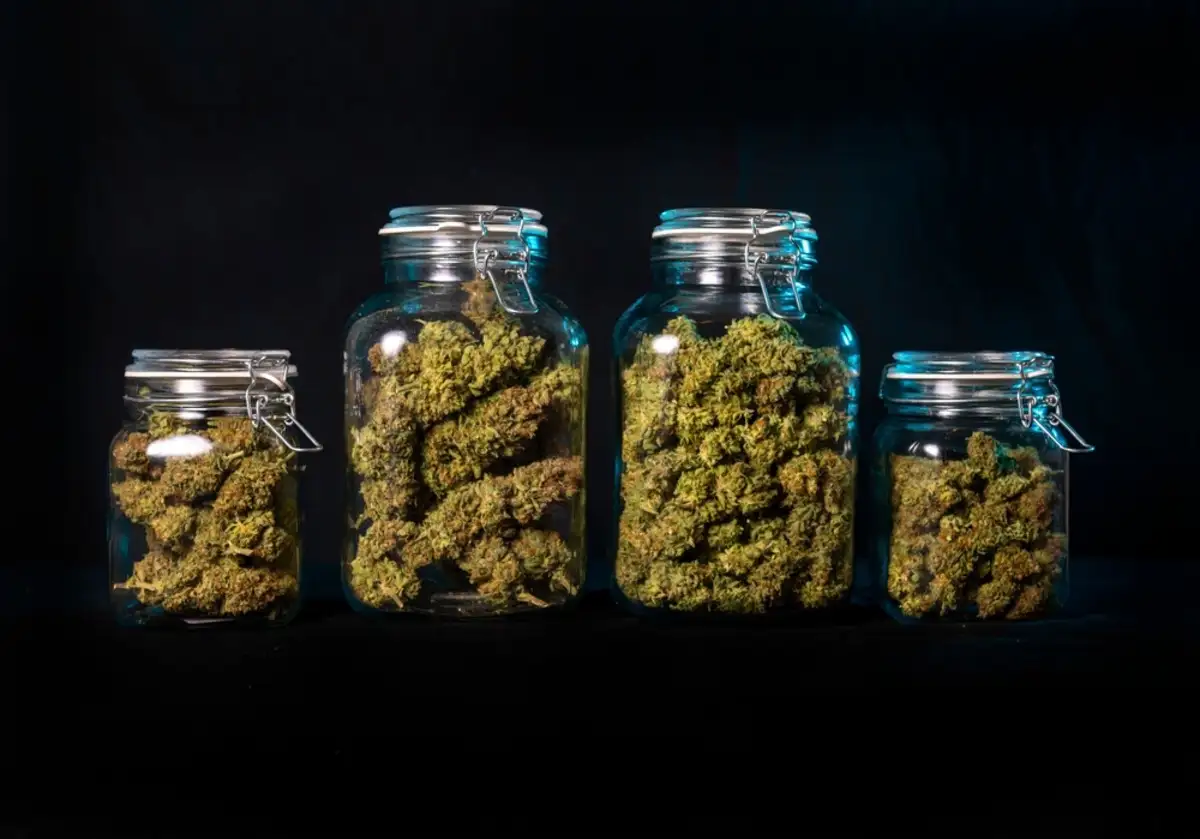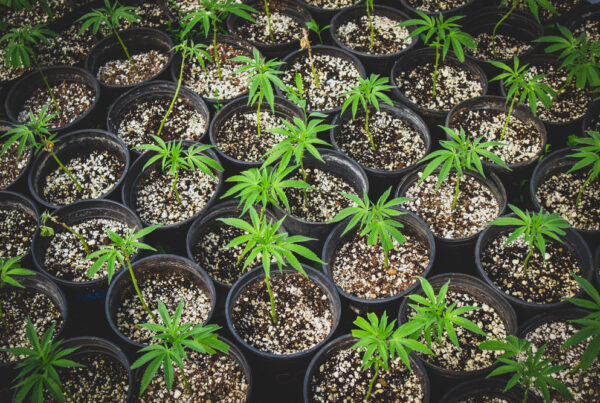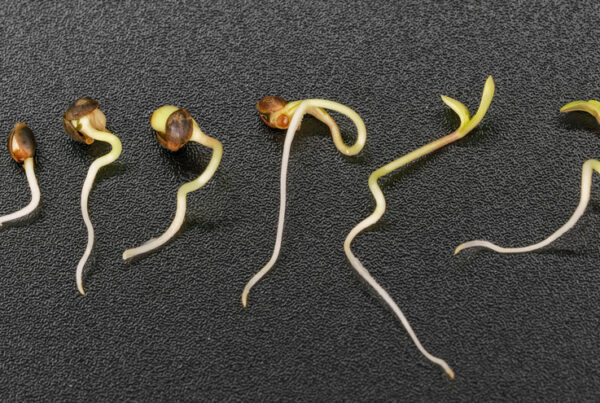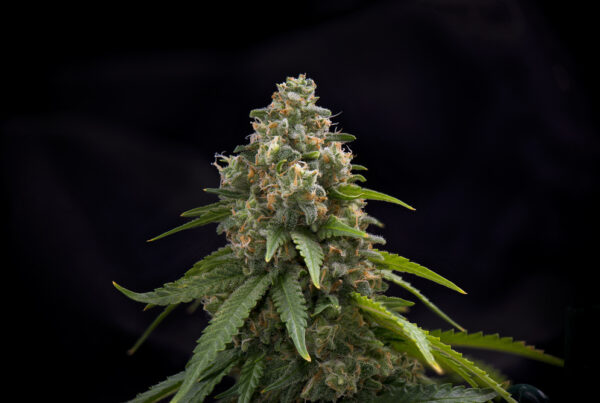Cannabis, also known as marijuana, has long been associated with inducing relaxation and a sense of calm. However, many individuals wonder if cannabis can actually make you tired. In this blog post, we will delve into the effects of cannabis on sleep and fatigue to better understand its impact on our energy levels.
Understanding the science behind cannabis and its effects is crucial in order to comprehend its potential influence on sleep and fatigue. Research has shown that cannabis contains various compounds, with the two most prominent being tetrahydrocannabinol (THC) and cannabidiol (CBD). These compounds interact with our body’s endocannabinoid system, which plays a role in regulating sleep and wakefulness.
When it comes to sleep, THC has been found to have sedative properties, potentially promoting a more relaxed state conducive to sleep. On the other hand, CBD has been suggested to have wake-promoting effects, which may counteract the sedative properties of THC. This delicate balance between THC and CBD in cannabis strains can influence the quality and duration of sleep.
Furthermore, cannabis can affect the sleep cycle itself. Research suggests that cannabis use may decrease the amount of time spent in rapid eye movement (REM) sleep, which is associated with dreaming and cognitive restoration. This alteration in the sleep cycle may impact overall sleep quality and lead to feelings of fatigue upon waking.
While cannabis may have potential benefits for sleep, it is important to consider its impact on sleep disorders. Some studies have shown that cannabis may alleviate symptoms of certain sleep disorders, such as insomnia and sleep apnea. However, more research is needed to fully understand the long-term effects and potential risks associated with using cannabis as a treatment for sleep disorders.
In addition to sleep, cannabis use has also been linked to fatigue. Some individuals report feeling tired or lethargic after consuming cannabis, especially in higher doses. However, the relationship between cannabis and fatigue is complex and influenced by various factors.
Factors such as strain types, dosage, and consumption methods can all contribute to the level of fatigue experienced. Different strains of cannabis have varying effects, with some promoting relaxation and others boosting energy levels. Similarly, the dosage and consumption method can impact the intensity of the effects and potential fatigue.
Individual factors, including tolerance levels and overall health, also play a role in how cannabis affects fatigue. Some individuals may be more sensitive to the sedative effects of cannabis, while others may experience a boost in energy. It is important to understand your own body’s response to cannabis and adjust your consumption accordingly.
If you find yourself experiencing cannabis-induced fatigue, there are strategies to help manage it. Responsible cannabis use, such as starting with lower doses and monitoring your response, can help mitigate fatigue. Additionally, exploring alternative methods for boosting energy, such as exercise or certain supplements, may be beneficial.
However, it is crucial to recognize when cannabis-induced fatigue may be a symptom of an underlying issue. Chronic fatigue syndrome (CFS) is a condition characterized by persistent fatigue that is not relieved by rest. If you are experiencing prolonged and excessive fatigue, it is important to seek medical advice to rule out any underlying medical conditions.
In conclusion, the relationship between cannabis and fatigue is multifaceted. While some individuals may experience tiredness or lethargy after cannabis use, others may find it has little impact on their energy levels. Understanding strain types, dosage, and individual factors can help manage cannabis-induced fatigue and promote responsible use. However, it is essential to be aware of your own body’s response and seek medical advice if fatigue persists or worsens.

Introduction: Understanding Cannabis and Its Effects
Cannabis, also known as marijuana, is a plant that has been used for various purposes for centuries. It contains over 100 different chemical compounds called cannabinoids, with the two most well-known being tetrahydrocannabinol (THC) and cannabidiol (CBD).
THC is the psychoactive compound responsible for the “high” associated with cannabis use. It binds to cannabinoid receptors in the brain, triggering a series of chemical reactions that result in altered perception, mood, and cognition. CBD, on the other hand, does not produce psychoactive effects but has been associated with potential therapeutic benefits.
When consumed, cannabis can be ingested in various forms, including smoking, vaporizing, or consuming edibles. The method of consumption can affect the onset and duration of the effects.
Understanding the effects of cannabis on the body requires knowledge of the endocannabinoid system (ECS), which is a complex network of receptors and neurotransmitters throughout the body. The ECS plays a crucial role in regulating various physiological processes, including sleep, appetite, pain sensation, mood, and immune response.
The effects of cannabis on sleep and fatigue are of particular interest to many individuals. Sleep is an essential aspect of our overall well-being, and disruptions in sleep patterns can have significant impacts on our physical and mental health. Understanding how cannabis affects sleep and fatigue can help individuals make informed decisions about its use.
In the next sections, we will explore the science behind cannabis and sleep, delve into the potential relationship between cannabis and fatigue, examine the factors that influence cannabis-induced fatigue, and provide strategies for managing it effectively. By gaining a comprehensive understanding of these topics, we can better navigate the complex effects of cannabis on sleep and fatigue.

The Science Behind Cannabis and Sleep
Cannabis has been used for centuries as a sleep aid, but understanding the science behind its effects on sleep is essential for a comprehensive understanding. In this section, we will explore the role of THC and CBD in sleep, how cannabis affects the sleep cycle, and its potential benefits for sleep disorders.
The Role of THC and CBD in Sleep
THC and CBD are the two primary cannabinoids found in cannabis, and they have different effects on sleep. THC has been found to have sedative properties and may promote relaxation, making it potentially beneficial for individuals struggling with insomnia or difficulty falling asleep. On the other hand, CBD has been suggested to have wake-promoting effects, potentially counteracting the sedative properties of THC.
The interaction between THC and CBD in different strains of cannabis can influence the overall sleep experience. Strains with higher THC content may induce drowsiness and help with falling asleep, while strains with higher CBD content may provide a more alert and wakeful state. Finding the right balance of THC and CBD is crucial for individuals seeking to use cannabis for sleep purposes.
How Cannabis Affects the Sleep Cycle
Cannabis can also impact the sleep cycle itself. Research suggests that THC can reduce the amount of time spent in rapid eye movement (REM) sleep, which is a crucial phase associated with dreaming and cognitive restoration. This reduction in REM sleep may result in individuals feeling less rested upon waking.
Additionally, cannabis use has been linked to an increase in slow-wave sleep (SWS), also known as deep sleep. SWS is believed to be important for physical restoration and recovery. While increased SWS can be beneficial, it may also contribute to a groggy or sluggish feeling upon waking.
Understanding the impact of cannabis on the sleep cycle is essential for individuals looking to optimize their sleep quality and overall well-being. Striking a balance between the different stages of sleep is crucial for feeling refreshed and restored upon waking.
Cannabis and Sleep Disorders
Cannabis has been explored as a potential treatment for various sleep disorders. Some studies suggest that cannabis may alleviate symptoms of insomnia, sleep apnea, and other sleep-related conditions. However, the research in this area is still limited, and more studies are needed to fully understand the benefits and potential risks associated with using cannabis for sleep disorders.
It is important to note that while cannabis may provide temporary relief for sleep disorders, it is not a long-term solution. Treating the underlying causes of sleep disorders and adopting healthy sleep habits should remain the primary focus for individuals seeking to improve their sleep quality.
Understanding the science behind cannabis and sleep is crucial for individuals looking to harness its potential benefits or mitigate any negative impacts on their sleep patterns. By considering the role of THC and CBD, the effects on the sleep cycle, and the potential benefits for sleep disorders, individuals can make informed decisions about incorporating cannabis into their sleep routine.

Does Cannabis Cause Fatigue?
Cannabis use has been associated with feelings of fatigue in some individuals. In this section, we will explore the short-term and long-term effects of cannabis on energy levels, as well as the potential connection between cannabis and chronic fatigue syndrome.
Short-Term Effects of Cannabis on Energy Levels
In the short term, cannabis use can lead to feelings of tiredness or lethargy. This is often referred to as a “cannabis hangover” and is commonly experienced after consuming larger doses of cannabis, especially strains high in THC. The sedative effects of THC can result in decreased motivation, reduced energy levels, and a general sense of fatigue.
Additionally, cannabis can affect cognitive function, including attention and memory, which can contribute to feelings of mental fatigue. This cognitive impairment may also lead to decreased productivity and performance in daily activities.
Long-Term Effects of Cannabis Use on Fatigue
The long-term effects of cannabis use on fatigue are less clear and can vary among individuals. Some studies suggest that chronic cannabis use may lead to a state of chronic fatigue, even in the absence of immediate intoxication. This chronic fatigue may be attributed to various factors, including the impact on sleep quality and disruptions in the endocannabinoid system.
However, it is important to note that research in this area is limited and often conflicting. Some studies have found no significant association between cannabis use and chronic fatigue, while others suggest a potential link. Further research is needed to better understand the long-term effects of cannabis on fatigue.
The Connection Between Cannabis and Chronic Fatigue Syndrome
Chronic fatigue syndrome (CFS) is a condition characterized by persistent fatigue that is not relieved by rest and is accompanied by a range of other symptoms. While the exact cause of CFS is unknown, there have been anecdotal reports of individuals with CFS experiencing symptom relief with the use of cannabis.
However, it is important to approach the use of cannabis for CFS with caution. Cannabis may provide temporary relief for some individuals, but it is not a cure for CFS and should not replace proper medical management. Consulting with a healthcare professional is essential for individuals with CFS who are considering cannabis as a potential treatment option.
Understanding the potential effects of cannabis on fatigue is crucial for individuals who are concerned about feeling tired or lethargic after cannabis use. While short-term fatigue is commonly reported, the long-term effects and the connection with chronic fatigue syndrome require further research. Responsible cannabis use, monitoring individual response, and seeking medical advice when necessary are important steps in managing cannabis-induced fatigue.

Factors Influencing Cannabis-Induced Fatigue
Various factors can influence the level of fatigue experienced after consuming cannabis. In this section, we will explore the role of strain types, dosage, consumption methods, and individual factors in determining the extent of cannabis-induced fatigue.
Strain Types and Their Effects
Different strains of cannabis can have varying effects on energy levels and fatigue. Sativa strains are often associated with providing a more uplifting and energizing experience, while indica strains are known for their relaxing and sedating effects. Hybrid strains, which are a combination of sativa and indica, can have a more balanced effect.
Understanding the characteristics and effects of different strain types is essential when considering the potential impact on fatigue. Choosing a strain that aligns with your desired energy levels and overall experience can help minimize the risk of excessive fatigue.
Dosage and Consumption Methods
The dosage and consumption method of cannabis can significantly influence the level of fatigue experienced. Higher doses of cannabis, especially those high in THC, are more likely to induce feelings of tiredness and lethargy. Starting with lower doses and gradually increasing as needed can help individuals find their optimal dosage without overwhelming fatigue.
The method of consumption also plays a role. Inhalation methods, such as smoking or vaporizing, often result in a faster onset of effects but with a shorter duration. Edibles, on the other hand, have a slower onset but can provide a longer-lasting experience. Understanding the timing and duration of effects can help in managing fatigue effectively.
Individual Factors and Tolerance Levels
Individual factors, including tolerance levels and overall health, can influence the extent of cannabis-induced fatigue. Regular cannabis users may develop tolerance to its sedative effects over time, leading to a reduced likelihood of experiencing excessive fatigue. Conversely, individuals with lower tolerance or those new to cannabis may be more susceptible to fatigue.
Additionally, other individual factors such as metabolism, body weight, and overall health can impact the way cannabis is processed in the body and the resulting effects. Being aware of these individual differences and adjusting consumption accordingly can help minimize fatigue.
Understanding the various factors that influence cannabis-induced fatigue is essential for individuals seeking to manage their energy levels effectively. Considering strain types, dosage, consumption methods, and individual factors can help in finding the right balance and minimizing the risk of excessive fatigue. Experimenting with different approaches and listening to your body’s response is key to optimizing your cannabis experience.

Managing Cannabis-Induced Fatigue
Managing cannabis-induced fatigue is crucial for individuals who experience excessive tiredness or lethargy after cannabis use. In this section, we will explore some strategies and tips for responsible cannabis use, alternative methods for boosting energy, and when to seek medical advice.
Tips for Responsible Cannabis Use
- Start with low doses: Begin with a low dose of cannabis and gradually increase if needed. This allows you to gauge your individual response and minimize the risk of overwhelming fatigue.
- Choose the right strain: Consider the strain types and their effects when selecting cannabis. Sativa strains, known for their uplifting properties, may be preferred for individuals looking to minimize fatigue.
- Time your consumption: Be mindful of the timing of your cannabis use. Using cannabis earlier in the day or during times when you can afford to be more relaxed can help mitigate the impact of fatigue on daily activities.
- Monitor your tolerance: Regular cannabis users may develop tolerance to its sedative effects over time. Pay attention to your tolerance levels and adjust your consumption accordingly to manage fatigue.
- Stay hydrated: Drinking plenty of water can help counteract the dehydrating effects of cannabis, which may contribute to feelings of fatigue.
Alternatives and Supplements for Energy
If you find yourself experiencing excessive fatigue after cannabis use, there are alternative methods and supplements that can help boost your energy levels:
- Exercise: Engaging in physical activity, such as aerobic exercises or yoga, can increase blood flow, oxygenation, and promote overall energy levels.
- Healthy diet: Consuming a balanced diet rich in fruits, vegetables, lean proteins, and whole grains can provide sustained energy throughout the day.
- Caffeine: In moderation, caffeine can help counteract feelings of fatigue. However, be mindful of potential interactions between caffeine and cannabis, as they can vary among individuals.
- Natural supplements: Certain supplements, such as vitamins B12 and D, omega-3 fatty acids, and adaptogens like ginseng or ashwagandha, have been associated with increased energy levels. Consult with a healthcare professional before starting any new supplements.
When to Seek Medical Advice
If you consistently experience excessive fatigue or if your fatigue worsens despite implementing strategies to manage it, it is important to seek medical advice. Fatigue can be a symptom of underlying health conditions or medication interactions that may require medical attention. A healthcare professional can help evaluate your specific situation and provide guidance on managing cannabis-induced fatigue effectively.
By following these tips for responsible cannabis use, exploring alternative methods for boosting energy, and seeking medical advice when necessary, individuals can better manage cannabis-induced fatigue and ensure a balanced and positive cannabis experience.
Conclusion: The Complex Relationship Between Cannabis and Fatigue
The relationship between cannabis and fatigue is complex and influenced by various factors. While some individuals may experience tiredness or lethargy after cannabis use, others may find it has little impact on their energy levels. Understanding strain types, dosage, and individual factors can help manage cannabis-induced fatigue and promote responsible use. However, it is essential to be aware of your own body’s response and seek medical advice if fatigue persists or worsens.
Cannabis contains compounds like THC and CBD that can have different effects on sleep and energy levels. THC has sedative properties and can promote relaxation, potentially leading to feelings of tiredness. CBD, on the other hand, may have wake-promoting effects that counteract the sedative properties of THC. Finding the right balance of THC and CBD in cannabis strains is crucial for individuals seeking to use cannabis for sleep or fatigue management.
Cannabis can also impact the sleep cycle, with some research suggesting a reduction in REM sleep and an increase in deep sleep. These alterations may affect overall sleep quality and contribute to feelings of fatigue upon waking. Additionally, cannabis use has been explored as a potential treatment for sleep disorders, although more research is needed to fully understand its benefits and risks.
Various factors influence cannabis-induced fatigue, including strain types, dosage, consumption methods, and individual factors like tolerance levels and overall health. Choosing the right strain, starting with low doses, and being mindful of consumption methods can help minimize fatigue. Additionally, exploring alternative methods for boosting energy, such as exercise or dietary changes, can be beneficial.
It is important to approach cannabis use responsibly and be aware of your own body’s response. While cannabis can provide temporary relief for fatigue or sleep issues, it is not a solution for underlying health conditions. Seeking medical advice when necessary and maintaining open communication with healthcare professionals is crucial for overall well-being.
In conclusion, the effects of cannabis on sleep and fatigue are nuanced and vary among individuals. The interplay between strain types, dosage, consumption methods, and individual factors can determine the extent of cannabis-induced fatigue. Responsible use, monitoring individual response, and seeking medical advice when necessary are key steps in navigating the complex relationship between cannabis and fatigue.






